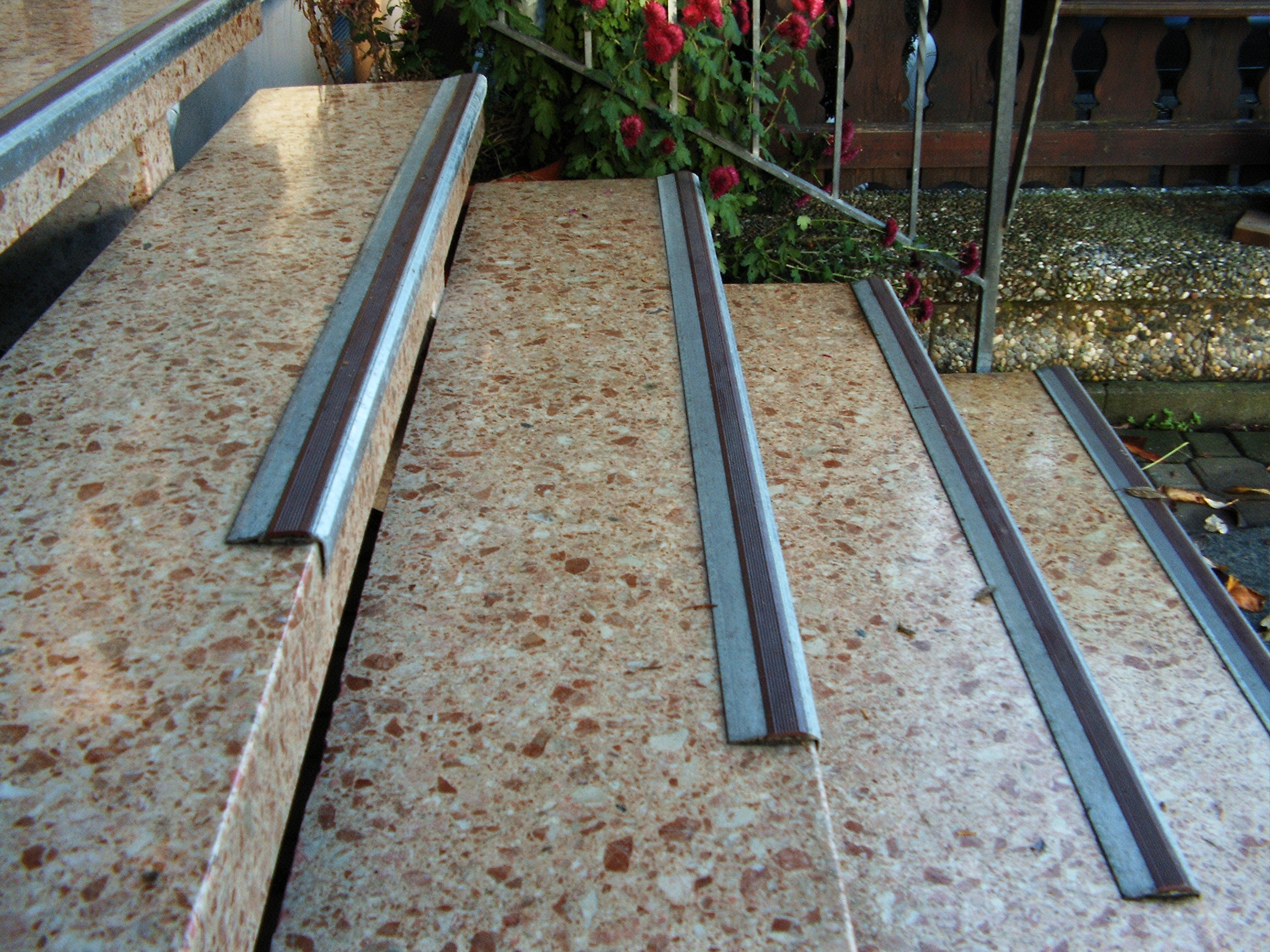Stair Nosing on:
[Wikipedia]
[Google]
[Amazon]
Nosing is the horizontal, protruding edge of a stair where most foot traffic frequently occurs.


Tread nosing
The horizontal projection to the front of a tread where most foot traffic frequently occurs. The nosing is the protrusion beyond the riser when vertical risers are used, or beyond the back of the tread below, when angled risers or no risers are used. Anti-slip strips or nosings may be applied. These stair parts can be manufactured from a variety of materials including aluminum, vinyl, and wood.Landing nosing
The landing nosing will often travel into the landing area to border the bottom of the balusters. The projection over the landing face will be the same as for the treads in the staircase.Nosing projection
In timber flights, The nosing traditionally projects forward of the riser, the same distance as the thickness of the tread material.
Safety
Stair nosing, especially in commercial and industrial settings, are typically fitted with a non-slip surface to increase traction and prevent injury or even death from slips, trips, and falls. TheNational Safety Council
The National Safety Council (NSC) is a 501(c)(3) nonprofit, public service organization promoting health and safety in the United States. Headquartered in Itasca, Illinois, NSC is a member organization, founded in 1913 and granted a congressi ...
reports that there are over one million stair-related accidents every year. Installing anti-slip nosing is a proven method of accident prevention.
California Title 24 Compliance
Many states have introduced laws and mandates that require new staircase construction to include anabrasive
An abrasive is a material, often a mineral, that is used to shape or finish a workpiece through rubbing which leads to part of the workpiece being worn away by friction. While finishing a material often means polishing it to gain a smooth, reflec ...
surface or stair tread A stair tread is the horizontal portion of a set of stairs on which a person walks. The tread can be composed of wood, metal, plastic, or other materials. In residential settings, treads can be covered in carpeting. Stair treads can come in non-slip ...
to minimize the risk of stairway related incidents. One notable instance of this type of building regulation is 'Title 24, Part 2, Section 2-3326(b)' of the California Energy Commission
The California Energy Commission, formally the Energy Resources Conservation and Development Commission, is the primary energy policy and planning agency for California.
Created in 1974 and headquartered in Sacramento, the Commission'core respon ...
's "Building Energy Efficiency Program".
The regulation contains a detailed set of rules that must be followed when installing new steps in settings like municipal buildings, industrial plants, schools, etc. Perhaps the most recognizable standard in California's Title 24 building code is the need for a slip-resistant tread or nosing that is of contrasting color from the steps. This regulation affects not only future stair installations, but existing stairs as well. The purpose of this is to increase the discernibility of each step to prevent accidents for those who may be visually-impaired.
References
{{reflist Stairs Stairways Architectural elements Building engineering Safety codes